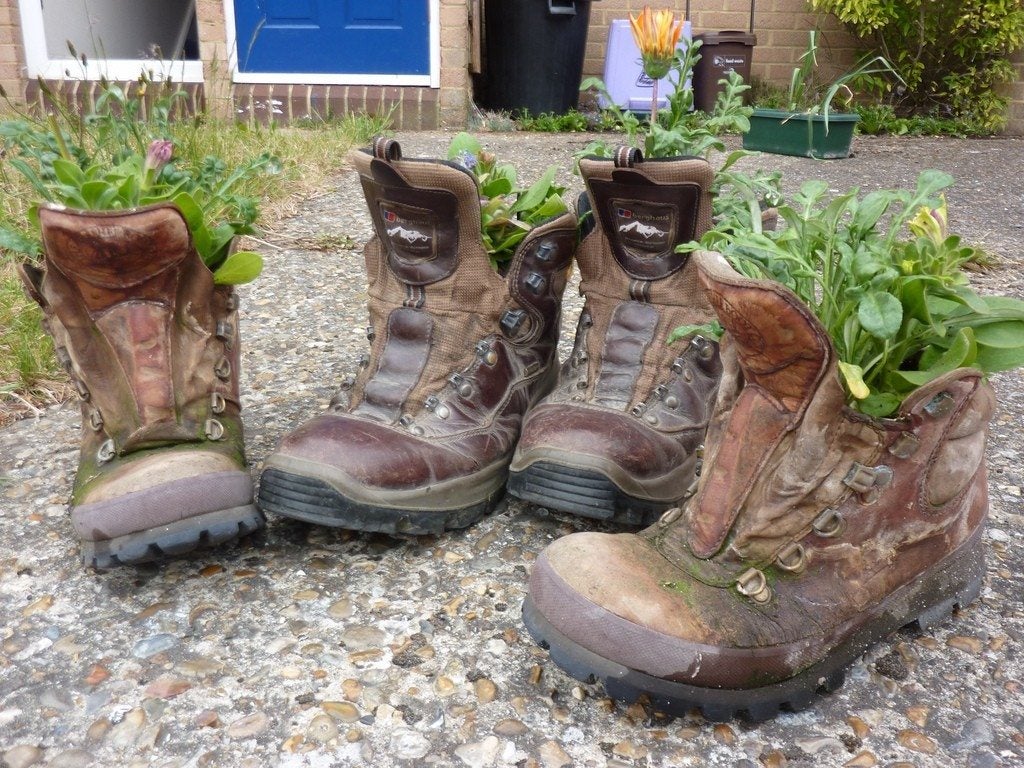Using Salvaged Materials For Garden Construction


Salvaged materials that are reused in garden construction differ from recycled materials. Learn more about using different salvaged materials and where to find them in this article.
Salvaged Materials vs. Recycled Materials
Salvaged materials that are reused in garden construction differ from recycled materials. Salvaged materials are generally used in their original context, such as with patio flooring and walkways. They are used as decorative elements such as architectural stonework and antique garden furniture. While these items may require cleaning, repainting, or refinishing, salvaged materials do not need to be remanufactured as do recycled materials. Recycled materials, on the other hand, are generally created from existing products. Reusing salvaged materials in the landscape for garden construction has many benefits. Since these materials are kept out of landfills, it helps save the environment. Many salvaged materials are unique and one of a kind. Therefore, reusing them can add further interest and meaning to the garden. Of course, one of the best reasons for using salvaged materials in the garden is the cost, which is much less than other, more expensive alternatives. Rather than buying the same expensive items brand new, look around for similar inexpensive items instead that are salvaged and can be reused as something else in the garden.
Using Salvaged Materials for Garden Construction
Nearly any type of material can be used for garden construction, especially if it's sturdy and weather resistant. For instance, railroad ties are oftentimes acquired for next to nothing from salvage yards or from the railways themselves, especially when they are busy replacing them with newer ones. Since these are treated with creosote, they shouldn't be used with edible plantings; however, they are excellent for creating walls, steps, terraces, and edging for other landscaping projects. Treated landscape timbers are similar, only smaller, and can be used much the same way. Landscape timbers can also be used for making raised beds and pergolas. As with railroad ties, it's not a good idea to use any treated wood around edible plants. Salvaging unique items, especially those with decorative details, can enhance the interest level of garden structures and designs. Broken pieces of concrete are great for garden walls and paving, as are salvaged bricks, which are also great for achieving that "age-old" appearance in the garden. Salvaged bricks can be used for creating beds, walkways, and edging. Materials such as terra cotta tiles may be used as decorative elements within the garden as well. Various types of stone cleared from farmland and building sites often make their way to salvage yards. These can be used in the garden for all types of construction, from walkways and edging to retaining walls and ornamental accents. Discarded tires can be turned into attractive, ready-made containers for plants. They are also good for creating small water ponds and fountains. Materials such as decorative light fixtures, metalwork, urns, woodwork, etc. can all be salvaged and reused within the garden. Even natural materials have a place in the garden, such as weathered pieces of driftwood or bamboo. Everyone loves a bargain and using salvaged materials in the garden is a great way to take advantage of one. As with anything, you should always shop around, comparing salvage companies with other similar sources. Finding and using them may take some time and creativity, but in the long run, salvaging items for garden construction will be well worth the extra effort. You'll not only save money and have a beautiful garden to show for it, but you'll also be saving the environment too.
Sign up for the Gardening Know How newsletter today and receive a free copy of our e-book "How to Grow Delicious Tomatoes".

Nikki Tilley has been gardening for nearly three decades. The former Senior Editor and Archivist of Gardening Know How, Nikki has also authored six gardening books.